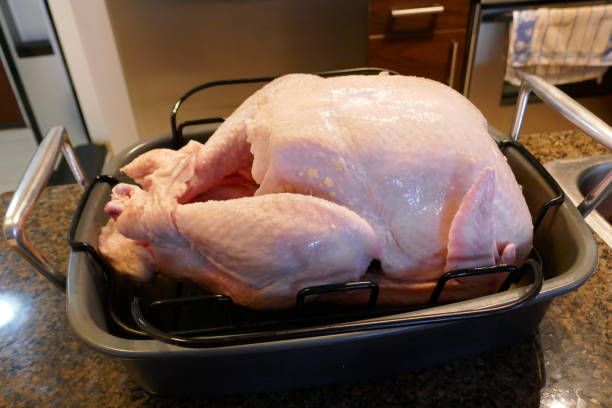Grilled cheese? Try a tartine recipe instead
And to drink …
Classic French cafe dishes suggest, no surprise, classic cafe wines. The roasted pepper tartine would be ideal with a sauvignon blanc from the Loire, whether Sancerre, Pouilly-Fumé, Quincy or a less exalted (though not necessarily lesser) appellation. If you prefer a different white, a muscadet, a Loire chenin blanc and a host of other fresh dry whites would be just as good. A Jura savagnin, with a nutty fino-like flavor, would also be delicious, as would any dry sparkling wine or a dry rosé.
— Eric Asimov
Those old-fashioned neighborhood cafes and bistros in Paris — the sometimes charming, sometimes seriously funky ones that serve a single plat du jour, along with a few salads and sandwiches — are becoming harder and harder to find.
Most of them have kitchens that are extremely small, often consisting of no more than a small wooden cutting board and a tiny wall-mounted electric oven. It’s ingenious how such a diminutive space can produce enough food to supply a bustling lunchtime trade.
A popular menu choice is a hot open-faced tartine. But just to confuse the issue, sometimes a tartine is called a croque, and it can also mean buttered toast for breakfast. When in doubt, ask.
For our purposes, a tartine is similar to a small pizza, constructed from a thick slice of rustic bread, lightly toasted. It is topped with savory vegetables and then some good French cheese, then undergoes a few minutes of browning under the broiler. The tartine emerges fragrant, bubbling and crisped. Accompanied by a green salad with a vinaigrette, it makes an extremely satisfying light meal, properly eaten with a fork and knife, and with a glass of wine. It’s just the thing for a quick lunch at home, too.
As for those vegetable toppings, just about anything you can think of qualifies. I’ve given two examples here. In one, garlicky roasted pepper strips, a dab of sun-dried tomato purée (sliced fresh tomatoes in summer) and black olives make a perfect bed for a thick slice of goat cheese or Camembert. I use good quality jarred peppers when sweet peppers are out of season.
For the other, suitable for cooler weather, there’s a light smear of Dijon mustard, wilted spinach, bacon lardons and the bold-flavored cheese called raclette, which melts in a spectacular way. If you can’t get raclette, substitute Gruyère or Emmenthaler.
Of course, there’s also the always popular ham and cheese, whatever kinds you fancy; roasted onions, walnuts and Roquefort; sautéed mushrooms with comté. And there’s no real reason to stick with French cheeses. How about spicy coppa with taleggio?
By the way, instead of making a meal of tartines, you can cut them into small wedges to serve with drinks. Sort of like a pizza party, but easily accomplished, even in a toaster oven, one after the other.
Spinach and Bacon Tartine
Time: 20 minutes
2 tsp. extra-virgin olive oil
6 oz. spinach or chard, washed
Salt and pepper
3 oz. thick-cut bacon, cut crosswise into 1/4-inch lardons
4 large 1/2-inch-thick slices bread from a day-old rustic loaf, such as miche or pain au levain (about 6-by-4 inches)
Dijon mustard
4 ounces raclette or Gruyère cheese
Put oil in a skillet over medium-high heat. Add spinach, season with salt and pepper, and cook, stirring for about 1 minute, until just wilted. Drain, cool and squeeze out excess water.
Fry bacon lardons in a dry skillet over medium-high heat for about 1 minute, until barely crisped. Remove and drain on paper towel.
Put the bread slices on a baking sheet and toast lightly on both sides under broiler (or use a toaster and place toasted slices on baking sheet). Brush lightly with mustard. Divide greens among the four toasts and spread out to cover. Tuck the bacon here and there.
Top each toast with slices of raclette or Gruyère (about 1 ounce total on each toast). Broil for 2 to 3 minutes, not too close to the heat, until nicely browned. Alternatively, bake tartines 3 to 5 minutes on top shelf of a 450-degree oven, or individually in a countertop toaster oven. Serve hot.
Yield: 4 servings
Roasted Pepper Tartine
Time: 20 minutes
2 roasted red or yellow bell peppers (good-quality jarred peppers are fine)
Salt and pepper
1 tsp. chopped fresh marjoram or
1/2 tsp. dried oregano
2 garlic cloves, minced
2 Tbsp. extra-virgin olive oil
4 large 1/2-inch-thick slices bread from a day-old rustic loaf, such as miche or pain au levain (about 6 by 4 inches)
4 Tbsp. sun-dried tomato purée (optional)
12 black olives, pitted
4 oz. firm fresh goat cheese log or 4 ounces Camembert
Remove seeds from peppers. Slice peppers into strips 1/4-inch wide. Put strips in a small mixing bowl and season well with salt and pepper. Add marjoram, garlic and oil. Stir to coat.
Put the bread slices on a baking sheet and toast lightly on both sides under broiler (or use a toaster, then place toasted slices on baking sheet). Brush with sun-dried tomato purée, if using. Divide peppers among the four toasts and spread out to cover. Tuck olives here and there.
Top each toast with 1/2-inch slices of goat cheese or Camembert (1 ounce total on each toast). Broil for 2 to 3 minutes, not too close to the heat, until nicely browned. Or, bake 3 to 5 minutes on top shelf of a 450-degree oven, or individually in a toaster oven. Serve hot.
Yield: 4 servings

